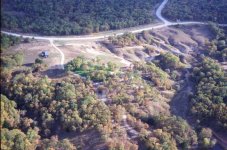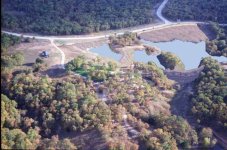jinman
Rest in Peace
- Joined
- Feb 23, 2001
- Messages
- 21,008
- Location
- Texas - Wise County - Sunset
- Tractor
- NHTC45D, NH LB75B, Ford Jubilee
The advantage of tracks over wheels is the lower psi on the ground. My 40,000 dozer can cross wet soil that will bog down my 14,000 backoe.
If you read the history of tractors, you find that the introduction of the rubber tire was met with opposition because many people said tires would compact the soil more than the iron cleats used previously. As with most things, there are no absolutes. A rubber tire loader has pretty huge tires and they are normally not a deep tread pattern. A dozer with a fairly new track will have cleats that are over 1" deep. Those cleats will have much more psi than the track as a whole. A worn track with 1/2" cleats doesn't have the same ability to compact soil as deep cleat on a new track. I guess it's like comparing a smooth roller to a sheeps foot roller.
I have anecdotal evidence from a friend who rented a Case LBH to build a pond dam. The dam looked good, according to him, but with the first big rain, it failed and washed out. He then rented a dozer to rebuild the dam and it has held ever since. Was it his method or the equipment? Perhaps it was the moisture in the soil and his technique that made the second dam more successful. I suspect technique had at least as much to do with success as the equipment.
I have also only seen one pond dam built with a rubber tire loader in my local area. It's still holding up pretty well, so I know it can be done. I do think the stability and lower center-of-gravity on the dozer gives you the ability to go places I would not want to travel on a rubber tire loader. I do think a rubber tire loader and a sheepsfoot roller to pull behind it would be a nice combination.One thing for sure. If you have to carry the spoils very far, the rubber tire loader will "eat the lunch" of a dozer.

